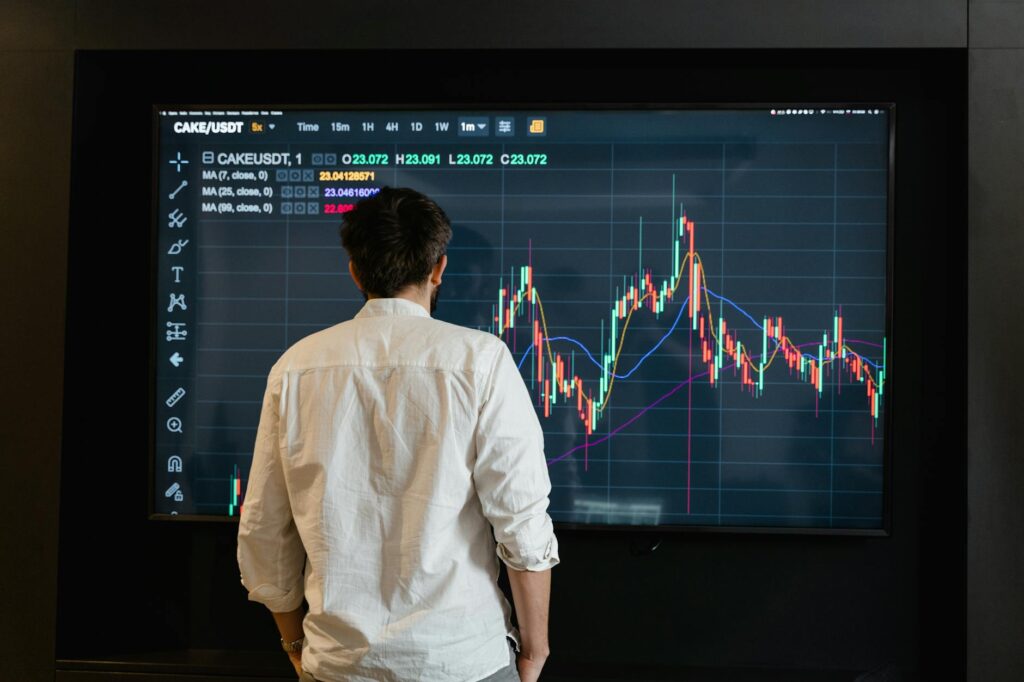The Psychological Shift Needed to Transition From Trader to Long-Term Investor.
You know the feeling. The pre-market jitters. The adrenaline spike when a position moves in your favor. The gut-wrenching drop when it doesn’t. You’re glued to the charts, your fingers hovering over the buy and sell buttons, living life one candlestick at a time. This is the world of the trader. It’s a high-stakes, high-energy sprint. But what happens when you decide the sprint is too exhausting? What happens when you want to run a marathon instead? Making the transition from a trader to long-term investor isn’t about changing a few settings on your brokerage app; it’s a profound psychological overhaul. It’s about rewiring the very core of how you view the market, risk, and even time itself.
It’s not just about a different strategy. It’s a different reality. One where action is often the enemy and boredom is your best friend. This shift is one of the hardest things to do in finance, because it requires you to unlearn the very habits that may have brought you short-term success. You have to trade the dopamine hit of a quick win for the quiet, almost imperceptible hum of compounding growth over decades.
Key Takeaways
- Change Your Time Horizon: The biggest shift is moving your focus from the next minute or hour to the next five, ten, or even thirty years.
- Redefine ‘Action’: For a trader, action is constant buying and selling. For an investor, the most powerful action is often disciplined inaction and patience.
- Embrace Volatility: Traders see volatility as a threat to be managed with stop-losses. Investors learn to see it as an opportunity to acquire quality assets at a discount.
- Shift Your Research: Ditch the minute-by-minute news and technical indicators for deep dives into company fundamentals, annual reports, and long-term industry trends.
- Measure Success Differently: Stop obsessing over daily P/L. Your new metric is the long-term compounded annual growth rate (CAGR) of your portfolio.
The Trader’s Brain: Wired for the Sprint
Think of a trader’s brain as a finely tuned instrument for pattern recognition and rapid response. It thrives on data, speed, and immediate feedback. It’s a system built for a chaotic environment, and it gets very, very good at it.
Chasing Tickers, Not Value
When you’re trading, you’re not really buying a piece of a company. Let’s be honest. You’re buying a ticker symbol. You’re betting on the movement of a squiggly line on a screen. Does it matter what that company manufactures, who its CEO is, or what its long-term competitive advantages are? Not really. Not for the next five minutes, anyway. The primary question is: Where will the price be in the next hour, day, or week? This mindset forces you to focus entirely on external factors: market sentiment, news catalysts, technical indicators, and order flow. The underlying business is almost an afterthought, a vessel for the price action you’re trying to predict.
The Dopamine Loop of P/L
Every successful trade, no matter how small, triggers a release of dopamine in your brain. That green number flashes on your screen, and you get a little chemical reward. It feels good. It feels like you’re smart, you’re in control. The platform developers know this. They design their user interfaces with satisfying sounds and colors to reinforce this very loop. This creates a powerful, often addictive, feedback cycle. You start craving that hit. When you have a losing trade, the urge to ‘win it back’ is immense. This emotional rollercoaster is exhausting and makes it nearly impossible to think rationally about the long term. You’re constantly reacting, never just… being.

The Investor’s Mind: Training for the Marathon
Now, let’s flip the coin. The investor’s mind is a completely different operating system. It’s designed for slow, deliberate thought and emotional resilience. It filters out the noise that a trader thrives on, focusing instead on a few key signals that matter over decades.
From Price Charts to Business Plans
An investor asks a fundamentally different question: Is this a wonderful business that I want to own a piece of for a very long time? The focus shifts dramatically from the ticker symbol to the underlying enterprise. Suddenly, you’re not just looking at charts; you’re reading 10-K filings and shareholder letters. You’re studying management teams, analyzing competitive moats, and thinking about macroeconomic trends that will unfold over years, not hours. You become a part-owner of a business, not a renter of a stock. This is a monumental shift. You start rooting for the company’s success, not just the stock’s short-term wiggles.
Embracing Boredom as a Superpower
Here’s a secret most people won’t tell you: successful long-term investing is incredibly boring. Most of the time, the correct thing to do is absolutely nothing. You buy a great asset and you wait. You wait through recessions, through market manias, through political turmoil, through periods where your portfolio does nothing for a year or two. The trader’s brain screams, “Do something! Sell! Buy! Rebalance!” The investor’s brain, however, has learned that patience is the ultimate arbitrage. The ability to sit still and let your thesis play out is what separates successful investors from frustrated market participants. Boredom isn’t a sign of failure; it’s a sign that your plan is working.
The Critical Psychological Shifts: From Trader to Long-Term Investor
So, how do you actually make the leap? It’s not a single event, but a series of conscious, deliberate mental shifts. You have to actively fight your old instincts and cultivate new ones.
Shift 1: Time Horizon – From Seconds to Decades
This is the big one. A trader’s time horizon might be as short as a few seconds (in high-frequency trading) or as long as a few weeks (for a swing trade). An investor’s minimum time horizon should be five years, and ideally, it’s measured in decades. Imagine you’re building a house. The trader is focused on laying each individual brick perfectly and quickly. The investor is looking at the architect’s blueprint for the entire building. The bricklayer’s work is crucial, but without the blueprint, it’s just a pile of well-laid bricks. Your investment thesis is your blueprint. It allows you to ignore the day-to-day imperfections because you have a clear vision of the final structure.
Shift 2: Information Diet – From Market Noise to Annual Reports
Your brain is a product of what you feed it. To change your thinking, you must change your information diet. It’s time for a detox.
- Unfollow: Get off the stock-tip Twitter accounts, the frenetic Reddit forums, and the cable news shows shouting about the “stock of the day.” This is pure noise designed to trigger your trading instincts.
- Follow: Start reading investor letters from people like Warren Buffett and Howard Marks. Read books on business strategy and behavioral finance. Listen to company earnings calls.
- Deep Dive: Pick one company you’re interested in and commit to reading its entire annual report (the 10-K). Yes, it’s long. Yes, it can be dry. But the insight you’ll gain into the actual business is worth more than 1,000 hours of watching charting videos.
Shift 3: Relationship with Volatility – From Panic to Opportunity
To a leveraged trader, a sudden 10% drop in price is a potential catastrophe. It can trigger a margin call or a stop-loss, forcing a sale at the worst possible time. Volatility is the enemy. For a long-term investor with a strong conviction in a business, a 10% drop is a gift. It’s a sale. It’s a chance to buy more of a wonderful business at a cheaper price. This is perhaps the most counterintuitive and difficult shift to make. You have to train your brain to feel excitement, not fear, when the market turns red. As Buffett famously said, “Be fearful when others are greedy and greedy when others are fearful.” This isn’t just a clever quote; it’s a core operating principle for investing.
Shift 4: Measuring Success – From Daily P/L to Compounded Growth
The daily P/L screen is a trader’s scoreboard. It’s a constant, real-time measure of success or failure. This needs to go. As an investor, your scoreboard is a calendar and a compounding calculator. You should measure your success not by whether you’re up or down today, but by whether you are on track to meet your financial goals in 20 years. Understanding the almost magical power of compound interest is essential for this shift. It’s the engine of long-term wealth, and it works best when left completely undisturbed.
Shift 5: Action vs. Inaction – From Constant Tinkering to Strategic Patience
Traders get paid for activity. The more they trade, the more opportunities they have to profit. Investors, on the other hand, often get paid for inactivity. Every time you buy or sell, you incur costs (commissions, taxes, bid-ask spreads) and risk making an emotional error. The urge to “do something” when the market is volatile is a powerful, ingrained human bias. Resisting it is a form of discipline.
“The stock market is a device for transferring money from the impatient to the patient.” – Warren Buffett
Your portfolio is not a garden you need to tend to every day. It’s more like a tree you plant. You choose a good spot, plant a quality sapling, and then you let it grow. You don’t dig it up every week to check the roots. You trust the process.

Practical Steps to Rewire Your Brain
Okay, this all sounds great in theory. But how do you actually do it? How do you fight years of conditioning?
- Create a ‘Cooling Off’ Account: Open a separate brokerage account specifically for long-term investments. Don’t even look at your old trading account. This physical and digital separation creates a mental one.
- Write It Down: For every single stock you buy in your new portfolio, write a one-page investment thesis. Why do you own this business? What is its competitive advantage? What would have to happen for you to sell it? This document becomes your anchor. When you feel the panic to sell, read your thesis first.
- Automate Everything: The best way to beat your emotions is to remove them from the equation. Set up automatic, recurring investments into your chosen stocks or index funds. The money leaves your bank account and gets invested without you ever having to press a button. This is the essence of dollar-cost averaging and a powerful tool for emotional discipline.
- Delete the App: Seriously. Once your automation is set up, delete the brokerage app from your phone. The temptation to check prices constantly is the single biggest destroyer of long-term returns. Commit to checking your portfolio once a quarter, or even once a year. The less you look, the better you’ll likely do.
Conclusion: The Marathoner’s Reward
The journey from trader to long-term investor is not about deciding which approach is superior. They are different disciplines for different goals. Trading is a job that requires constant attention and skill; investing is a process for building wealth that benefits most from inattention and patience. The psychological shift is about recognizing what you truly want to achieve. Do you want the thrill of the daily sprint, with all its accompanying stress and uncertainty? Or do you want the quiet confidence that comes from owning pieces of great businesses and letting the power of time and compounding do the heavy lifting for you?
Making this transition is a profound act of self-awareness. It requires humility, discipline, and a complete reframing of your relationship with money and markets. It’s not easy. But for those who successfully make the leap, the reward isn’t just financial. It’s a sense of peace. It’s the freedom from the tyranny of the ticker, and the start of a lifelong journey as a true owner and partner in the world’s great enterprises.


